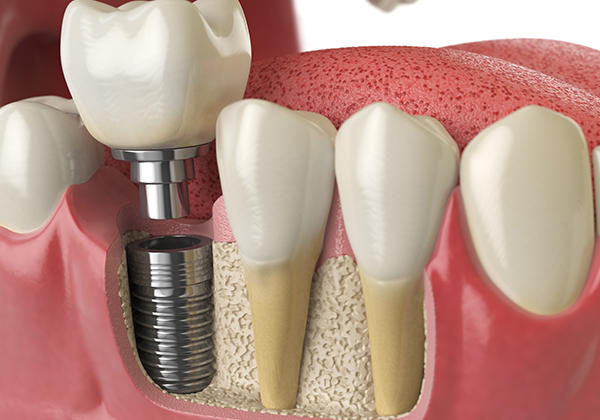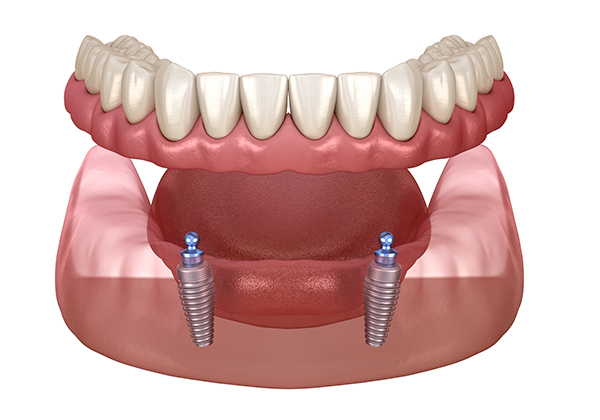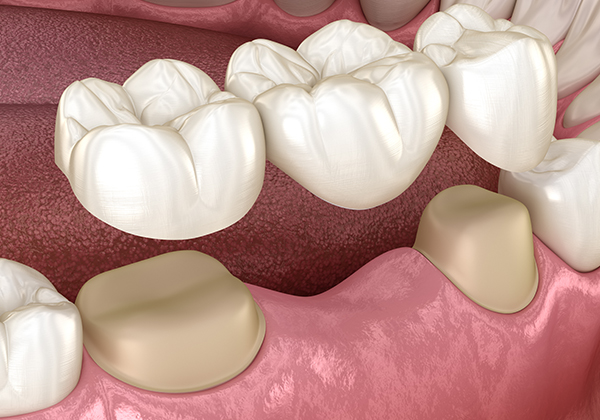Losing teeth can cause remaining teeth to shift, rotate, and become crooked, leaving you with a bad bite and unsightly spaces that can, in turn, make chewing food more painful and home care more difficult. Oral surgery for dental implants can help restore the form of your natural teeth and their function, whether you need to replace one tooth or a whole jaw. Dental implants can also be used to help secure dentures, preventing them from causing irritation due to rubbing and clicking noises, or as an alternative to partial dentures or a crown-and-bridge treatment.
The Dental Implant Procedure
- One of our dental surgeons will examine your mouth, take x-rays, and discuss your dental history, wants, and needs to determine if dental implants are right for you.
- If you are a candidate for this oral surgery procedure, we will then place the dental implant below the gumline.
- The artificial roots are then given enough time to stabilize, allowing the implant to begin reinforcing your jawbone and prevent further bone loss.
- Finally, we will attach a replacement tooth crown above the gumline to the implant and provide with care instructions.







